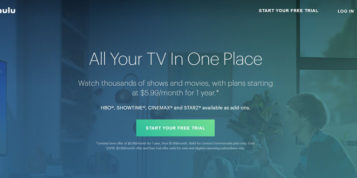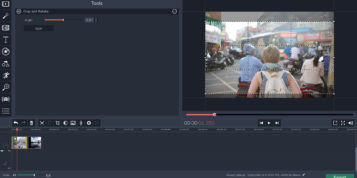Virtual reality is a software created, artificial environment that places the user in what seems like a real life situation. The simplest form of virtual reality is 3D, which we are all well rehearsed with now, but more in-depth use of virtual reality involves full wrap-around display screens that make the whole environment around a user become virtual. While not so long ago it seemed that a concept such as this could be reserved only to movie scripts, in recent years it has become increasingly popular, with major companies such as Facebook investing heavily in it with their Oculus VR headset. We look below at the rapid rise of virtual reality, or virtual entertainment as it is sometimes called, and what the future of it holds for marketers.
The History Of Virtual Reality
Virtual reality isn’t a new concept; there was a rough attempt at it in the 1950s where a small number of forward-thinkers tried to make virtual reality a reality in itself, but it never received the support that it needed. After this time, there were several more attempts, but by the mid-1990s the concept had all but failed, especially with the dawn and rise of the internet.
This changed with the Oculus Rift, an invention by Palmer Lucky. While not perfect, it presented a surprisingly lifelike virtual reality headset. Facebook acquired Oculus for a huge $2 billion, and it was clear to see that virtual reality was becoming a serious concept.
Why The Change In Attitude To Virtual Reality?
People love the imaginary and the fictional, hence the huge marketplace for TV shows, movies and fictional books. Virtual reality is the next step to this; it is imagination that allows us to be a part of it, with minimal effort on our part. As Matthew Schnipper says, it allows us to “put on these goggles, go nowhere, and be transported anywhere.” There is of course huge scope for development with virtual reality as well; perhaps new technology can be introduced that will allow us to feel a change in temperature, or feel vibrations in a particular part of the body.
The gaming market, a enormous industry with four out of five US households owning a games console, is perhaps one of the main reasons virtual reality has noticed a surge in popularity as it is the next logical step for gaming since the introduction of blu-ray. But it also has a number of other purposes, such as for training and learning – you can learn how to be a fireman or medic through virtual reality; the closest you can get to real life.
With the power and revenue of Facebook behind virtual reality, we may see it become a reality a lot sooner than we think. When the head of Oculus, Cory Ondrejka, was asked “How soon is VR going to be in the average American home?” he replied “As soon as we can get it there.” Several other big name brands have committed to the virtual reality industry as well, with Sony’s PlayStation VR, HTC’s & Valve with Vive, Google’s Google Cardboard and Samsung with the Gear VR.
People know that virtual reality isn’t real, but when they’re in the environment it is easy to forget this, and this is the allure that has led to the rise of virtual reality. It won’t be long before virtual reality is commonplace, with some headsets even being offered now with phone contracts.
How Can Marketers Use Virtual Reality?
So how can marketers use this to their advantage? While it may be a few years before virtual reality is adopted as mainstream, the benefits for this new technology are already clear. Some products, such as Samsung’s VR Gear headset is available for as little as $99 (£65), so it is likely that there are many consumers who will soon own one for marketers to target.
Room-scale Simulations
Marketers can re-create full, room-scale simulations for their target audience to explore and experience. You could be showcasing a new home that you would like to sell, a large exhibition or on a much larger, wider scale you could allow the user to experience whole locations, such as holiday locations. This is just what Marriott did for newly-weds to market honeymoons to them:
Product Testing
Another obvious route for marketers is product testing. Rather than market through social or advertising and hope that your consumer will either purchase your product or come in store to test it, you can deliver the test straight to their headset. This will allow them to try before they buy, and is sure to increase sales. An example of this route would be allowing the user to test drive a car without needing to come to the showroom first, as seen in the video below.
This is a test drive virtual reality teaser of the Volvo XC90:
https://www.youtube.com/watch?v=Wuln2bJkp1k
Showcasing Ideas
Alongside showcasing products and locations which already exist, virtual reality will allow users to experience things which haven’t yet been built. Websites like Indiegogo allow consumers to fund ideas which will hopefully turn into products, but they have nothing more to go on then simulated pictures and videos. Virtual reality could allow these same people to get a much better feel for a product or location before they crowdfund, and will also allow the creators of the idea to get feedback before a product is even built.
A short video of a virtual reality experience of a Tesco store which hasn’t yet been built:
https://www.youtube.com/watch?v=08S86X_5Crs
Alongside this, there will be increased opportunity for product placement and advertising within these new locations and ‘all around me’ movies, and once virtual reality becomes more mainstream there will undoubtedly be a host of new functions and features that application developers can make use of to effectively market and engage with their audience on a much deeper level.





